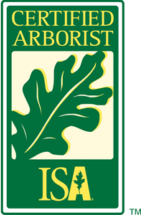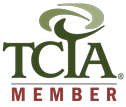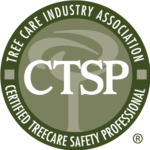Our comprehensive tree removal in Bainbridge Island, WA is designed to safely and efficiently handle tree removals of all sizes and complexities. Whether a tree is dead, diseased, hazardous, or simply in the way of a construction project, our expert team ensures the job is done with professionalism, precision and care.
Our ISA-certified arborists begin with a thorough assessment, evaluating the tree’s health, size, structural integrity, and proximity to buildings, power lines, or other trees. Based on this evaluation, we determine the safest and most effective removal method, whether it requires advanced rigging techniques, crane assistance, or sectional dismantling to prevent damage to your property.
At ClearTree, safety is our top priority. We adhere to industry best practices and use state-of-the-art equipment to ensure a controlled removal process. We also offer optional cleanup services, including wood chipping, stump grinding, and debris removal, leaving your property clean and hazard-free.
If you need tree removal in Bainbridge Island, WA, you can count on ClearTree for professional, reliable tree service tailored to your needs.
ClearTree’s Tree Removal Process
Inspection and Planning
With our team of ISA certified arborists we always start off by assessing the health and condition of the tree to determine if tree removal is necessary. In some cases, alternative solutions such as tree pruning, cabling, or disease treatment may be recommended to preserve the tree’s health and integrity. There are many scenarios where a tree can be preserved and treated with specific tree care techniques like tree pruning, end weight reduction, or crown raising. In some cases we will also use tree cabling and bracing to secure weaker trees that’s leaning over and are obstructing a part of the property.
Controlled Tree Felling
Tree felling is the process of cutting down a tree in a controlled manner. It involves assessing the tree’s size, lean, and surrounding environment to determine the safest direction for it to fall. Proper techniques, such as using precise cuts and wedges, help ensure a smooth and safe drop. Tree felling is commonly used for land clearing, hazard tree removal, or making space for new construction.
Crane-Assisted Tree Removal
A specialized technique used to safely and efficiently remove large, hazardous, or hard-to-access trees. This method is ideal for trees near structures, power lines, or in confined spaces where traditional felling isn’t possible. A crane allows for precise sectional removal, lifting tree sections away instead of letting them fall, minimizing impact on the surrounding area. This approach reduces risk, speeds up the tree removal process, and prevents damage to nearby property.
Chipping Branches and Debris
Chipping up debris is the process of breaking down branches, limbs, and other tree waste into small wood chips using a wood chipper. This method is an efficient way to clean up after tree removal or pruning, reducing bulk and making disposal easier. The resulting wood chips can be repurposed as mulch for landscaping, helping with moisture retention and weed control. At ClearTree, we offer chipping services as part of our tree removal and pruning work, ensuring a clean and tidy property when the job is done.
Root rot is a fungal disease that causes tree roots to decay, leading to instability and structural failure. A tree suffering from severe root rot often displays yellowing leaves, stunted growth, and a weakened base. Since the roots anchor the tree, a tree with extensive root decay can unexpectedly fall, posing a serious hazard. If root rot is widespread, removal is necessary to prevent collapse and to stop the disease from spreading to nearby trees.
If large sections of a tree’s canopy are consistently losing leaves and limbs, it could indicate an underlying health issue such as disease, pest infestation, or internal decay. Dead branches weaken the tree’s overall structure and increase the risk of falling limbs, which can cause property damage or injuries. When dieback is extensive and the tree is beyond recovery, removal is the safest option.
Severe storms can break large limbs, strip away bark, and split trunks, leaving trees unstable and hazardous. While some trees recover with proper care, others suffer irreparable damage that makes them unsafe. If a tree has lost a significant portion of its structure or is partially uprooted, removal is often the best way to ensure safety.
When expanding a property, building a new structure, or making significant landscape changes, some trees may need to be removed. While efforts can be made to preserve trees whenever possible, certain development projects require tree removal to ensure proper space, safety, and construction feasibility.
Trees growing too close to power lines pose a fire hazard and can lead to power outages. Branches that make contact with electrical lines can spark dangerous situations, especially during storms or high winds. In cases where pruning is not sufficient to eliminate the risk, removal may be required to prevent potential electrical hazards.
Tree removal should always be a last resort and handled with care. However, there are situations where it becomes absolutely necessary.
Trustindex verifies that the original source of the review is Google. The Clear Tree team did an excellent job and was a pleasure to work with.Trustindex verifies that the original source of the review is Google. Outstanding service from start to finish. I had a response to my first inquiry within 24 hours and an estimator on site the next day. Communication was flawless, the work was stellar, and overall it was a great experience. Definitely recommend!Trustindex verifies that the original source of the review is Google. Called scheduled an appointment. They were out five days later. Did a great job and would hire them again.
Owner's reply
Thank you for choosing us for your appointment, Willson! We're glad to hear that you were happy with the job done. We look forward to working with you again in the future.Trustindex verifies that the original source of the review is Google. Great guys. Fast work.
Owner's reply
Thank you, Robert, we appreciate your kind words and are glad you were pleased with the fast work from our team!Trustindex verifies that the original source of the review is Google. ClearTree just finished a 2 day job at my home. Tricky, technical work - they made it look simple. They've got the tools, the skills, and the gusto to do the job just right. I particularly appreciate their attention during cleanup. No little branches laying around. 100% would hire again, and my strongest recommendation.
Owner's reply
Thank you, Michael, for your wonderful feedback! We're glad you appreciated our team's skills and attention to detail during the cleanup. Your recommendation means a lot to us, and we look forward to working with you again!Trustindex verifies that the original source of the review is Google. Fast efficient and excellent work.
Owner's reply
Thank you, Jeff, for your kind words; your support means a lot to us!Trustindex verifies that the original source of the review is Google.
Owner's reply
Thank you, Michael, for the fantastic 5-star rating; we truly appreciate your support!Trustindex verifies that the original source of the review is Google. Our experience was over the top. They absolutely delivered way more than expected. ClearTree is an outstanding group to work with. They are great communicators from first contact through completion of the job. Their pricing is extremely competitive and fair, they arrived on time and put in a solid day completing all the agreed upon work. We’ll definitely contract them again when needed and highly recommend them.
Owner's reply
Thank you, Terry, for your fantastic feedback! We're glad to hear that you had such a positive experience and appreciate your recommendation. Looking forward to working with you again!Trustindex verifies that the original source of the review is Google. They are fantastic. Their work is what they say it is and they are fast.
Owner's reply
Thank you, Terry, for your kind words; we're glad to hear you found our work fantastic and efficient!Trustindex verifies that the original source of the review is Google. During a recent windstorm we had a 110' tree start uprooting and threatening a structure on our property. Sam and his team were able to make it out the same day due to the building threat. They had the right equipment for the job and very skillfully removed the tree before it crushed the building. Tree cutting is one of the most dangerous jobs and these guys are excellent at it!
Owner's reply
Thank you, Robert, for your kind words and for recognizing Sam and the team's expertise; we're glad they could safely handle the situation for you.Verified by TrustindexTrustindex verified badge is the Universal Symbol of Trust. Only the greatest companies can get the verified badge who has a review score above 4.5, based on customer reviews over the past 12 months. Read more
Contact us today for expert tree services that prioritize safety, sustainability, and your satisfaction. Entrust your tree removal projects to the pros!
ClearTree is the highest-rated tree service in Bainbridge Island, Poulsbo, Kingston, and the surrounding Kitsap area, with over 200 five-star reviews. We offer expert tree removal, pruning, and stump grinding, backed by an ISA Certified Arborist for professional, safe, and pristine results.




© 2020 ClearTree | All Rights Reserved. Website template by InTree Stock